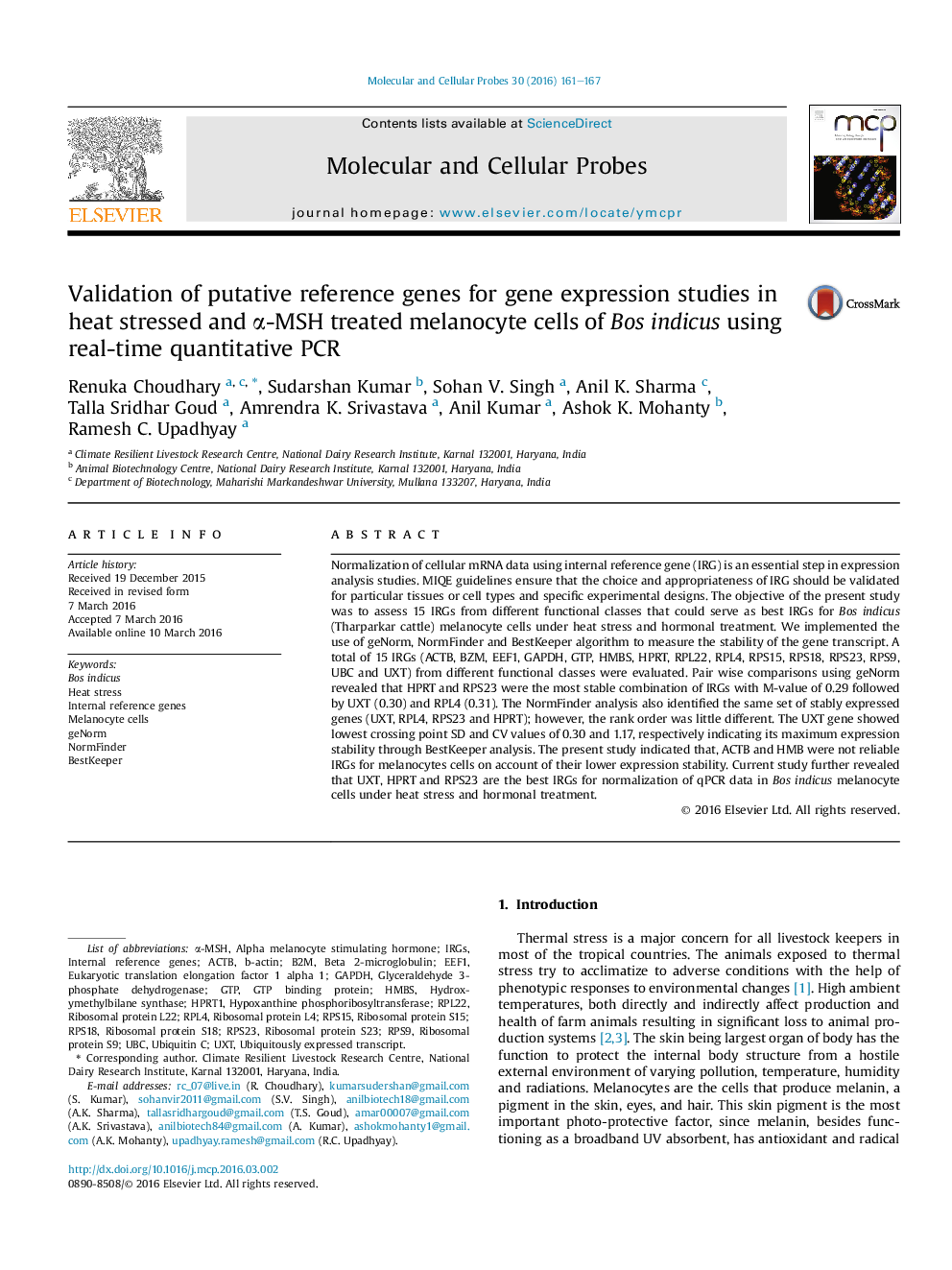| Article ID | Journal | Published Year | Pages | File Type |
|---|---|---|---|---|
| 2199588 | Molecular and Cellular Probes | 2016 | 7 Pages |
•15 internal reference genes (IRGs) were tested that could serve as best IRG in melanocyte cells.•The melanocyte cells were isolated and cultured in-vitro from Bos indicus (Tharparkar cattle).•geNorm, Normfinder and Bestkeeper algorithms were used to measure the gene transcript stability.•The present study reveals UXT, HPRT and RPS23 as the best internal reference genes in melanocyte cells.
Normalization of cellular mRNA data using internal reference gene (IRG) is an essential step in expression analysis studies. MIQE guidelines ensure that the choice and appropriateness of IRG should be validated for particular tissues or cell types and specific experimental designs. The objective of the present study was to assess 15 IRGs from different functional classes that could serve as best IRGs for Bos indicus (Tharparkar cattle) melanocyte cells under heat stress and hormonal treatment. We implemented the use of geNorm, NormFinder and BestKeeper algorithm to measure the stability of the gene transcript. A total of 15 IRGs (ACTB, BZM, EEF1, GAPDH, GTP, HMBS, HPRT, RPL22, RPL4, RPS15, RPS18, RPS23, RPS9, UBC and UXT) from different functional classes were evaluated. Pair wise comparisons using geNorm revealed that HPRT and RPS23 were the most stable combination of IRGs with M-value of 0.29 followed by UXT (0.30) and RPL4 (0.31). The NormFinder analysis also identified the same set of stably expressed genes (UXT, RPL4, RPS23 and HPRT); however, the rank order was little different. The UXT gene showed lowest crossing point SD and CV values of 0.30 and 1.17, respectively indicating its maximum expression stability through BestKeeper analysis. The present study indicated that, ACTB and HMB were not reliable IRGs for melanocytes cells on account of their lower expression stability. Current study further revealed that UXT, HPRT and RPS23 are the best IRGs for normalization of qPCR data in Bos indicus melanocyte cells under heat stress and hormonal treatment.
